It is common for law enforcement agencies to fight fire with fire when choosing vehicles for pursuit purposes, and the situation was no different in Australia than in other countries. During the early 1970s, they preferred the Ford Falcon because it offered V8 versions which were some of the most powerful cars on the country’s roads. However, as the 1970s progressed, the Falcon became heavier and lost its outright performance edge. Therefore, it was unsurprising that they turned their attention to cars like this 1976 Chrysler Valiant Charger 770 as a viable alternative. This car remains essentially unchanged from its pursuit days and offers potential buyers the rare opportunity to own a classic with a colorful past. It is listed here on Car Sales in Sydney, New South Wales, Australia. The seller set their price at A$79,000, and I must say a big thank you to Barn Finder Dave D for spotting this rare Australian classic.
Unlike its North American operation, Chrysler’s passenger car presence in Australia was almost exclusively led by cars carrying Valiant badges. There were some exceptions to the rule, including the Dodge Phoenix, but if buyers craved a Chrysler, it was almost always a Valiant. Most of the company’s offerings were locally adapted versions of American models. Although many buyers saw the new VH Valiant introduced in 1971 as a local product, it still rode on the parent company’s A-Body platform. With Ford and Holden experiencing great success with sporting variants like the Falcon GT, the Torana XU-1, and the Monaro GTS, Chrysler joined the party in 1971 with its Charger variant of the Valiant sedan. The new model featured a shorter wheelbase, a distinctive two-door hardtop body, and a simple but extraordinarily effective advertising campaign that captured the buying public’s imagination. Charger sales never eclipsed those achieved by Ford or Holden, but it established the company as a clear number three in a market where Japanese models had begun to gain traction. Law enforcement agencies at that time preferred Falcons as pursuit vehicles, with their optional 351ci Cleveland V8s providing enough power to cope with almost any cars prowling the streets. As the 1970s progressed, the Falcon became heavier and less powerful, forcing police departments to view the Charger as a viable alternative. Our feature car is one of those vehicles which appears to have changed little since its pursuit days ended. It wears its factory shade of Arctic White, although the seller admits it received an exterior repaint a few years ago. It still shines nicely, with no evidence of significant flaws or defects. The panels are straight, and the gaps are consistent. However, the lack of visible rust serves as the best news. It could be a problem with Chargers, and many ended their days in scrapyards as the situation reached the point of no return. That isn’t an issue here, meaning the new owner can leave the grinder and welder in the cupboard when they park this classic in their garage. The trim and glass look impressive for a vehicle of this age. The Valiant rolls on its optional factory sports steel wheels, which appear to be stained around the lug nuts. Removal and careful cleaning might return them to their former glory.
Although the Charger established its performance credentials with its E38 and E49 variants featuring the 265ci “Hemi” straight-six breathing deeply through three Weber sidedraft DCOE carburetors, the mid-1970s V8 models provided adequate performance to satisfy most buyers. Occupying this car’s engine bay is a 360ci version that sends 255hp to the Sure Grip rear end via a three-speed A727 TorqueFlite transmission. However, this car also features upgrades to its suspension to help its handling match its outright engine performance, with all the enhancements part of the company’s K13 options pack. Only 109 of these vehicles rolled off the line, making this a rare beast. If the driver pointed this Charger at a ¼-mile, the journey would take 15.4 seconds. Placing that figure into perspective, earlier in the decade, Ford’s 351-equipped Falcon had been the weapon of choice as the fastest and most potent Australian model. By 1976, it weighed a staggering 610lbs more than the Charger, and its Cleveland V8 took 16.4 seconds to cover the ¼-mile. For law enforcement agencies, it was a no-brainer. The seller indicates this car is essentially original, although it does sport Pacemaker headers, an MSD ignition, and some cosmetic enhancements. They don’t make any outrageous low-mileage claims. Instead, they indicate it has a genuine 341,900 kilometers (212,500 miles) on its odometer. They performed an engine rebuild in 2010, and the Valiant has since logged 75,000 kilometers (46,600 miles). It is in excellent mechanical health, with the seller including many receipts and other documents as part of the deal.
If this Charger has a genuine weakness, that honor falls to its interior condition. It is serviceable and tells the story of a classic that has been used as its creators intended. However, there are enough flaws and modifications to make some potential buyers question the asking price. It features bucket seats in Saddle vinyl with contrasting Tan carpets. The shifter for the TorqueFlite sticks through a center console, while the dash houses a Rally gauge cluster with a factory tachometer. Unfortunately, someone replaced the original radio with an aftermarket Kenwood radio/cassette player, and there is also a CD player mounted under the dash. Those modifications are easily reversed, although the cut rear trims present a more significant challenge. Locating replacements may prove challenging, meaning the buyer needs to monitor the usual online auction sites for the best results. The front seatcovers are worn and torn, but a reproduction set can cost as little as $150. The headliner is dirty and discolored, although a professional detailer might rectify that fault without costing a fortune. Rounding out the interior is one quirky item that carries over from its law enforcement past. There is a key-operated lock to the left of the shifter in the console. This locks the shifter in “Park” to prevent possible vehicle theft or to stop a rear-seat escapee using the Charger as their transport on a flight to freedom. It’s pretty cool, and even if I performed a total interior restoration, I would leave that intact for old times’ sake.
It has been fascinating to read feedback from the previous Barn Finds articles on Australian classics, with many readers questioning why Australian buyers are prepared to pay high prices for cars from that country. The explanation is both simple and complicated. Following World War II, vehicle manufacturing experienced a boom period, led by the introduction of the first locally-developed Holden. At various times, Holden, Ford, Chrysler, Nissan/Datsun, Mitsubishi, Volkswagen, Toyota, BMC, and Leyland, to name a few, offered a strong development and manufacturing industry producing genuine local models. However, the growth in cheap imports and the failure to adapt to buyer trends in a market with a total sales volume of around one million cars per year saw factories close their doors permanently. The last companies to turn off the lights were Toyota and Holden, and the Australian market exists purely on imports. There is no evidence that production will ever resume beyond some unsubstantiated rumors that Tesla may establish a facility in Australia. Therefore, potential buyers scramble for cars like this 1976 Charger 770 to own their slice of Australian motoring heritage. The price of admission for this Charger isn’t cheap, and recent sales results suggest the seller may need to be patient in waiting for a serious buyer to emerge. However, with local classics experiencing growing values, I believe it will eventually happen.
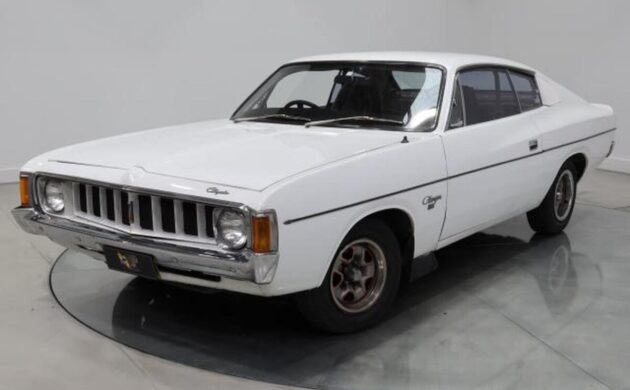
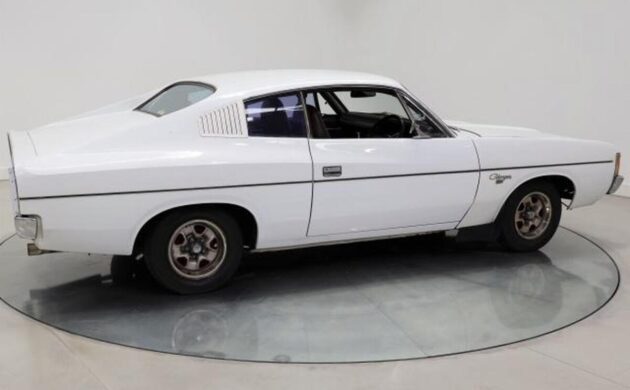
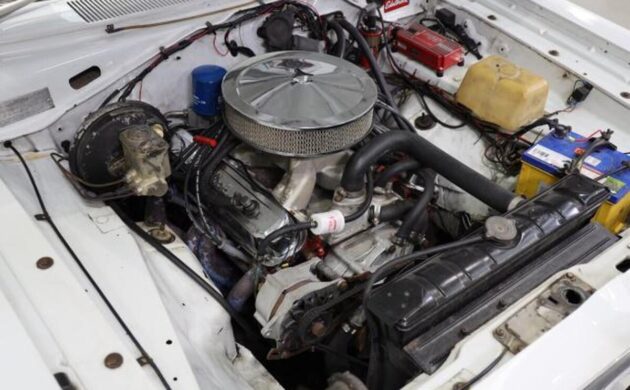
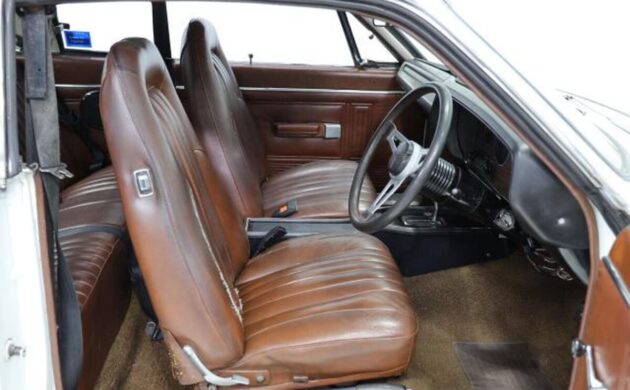
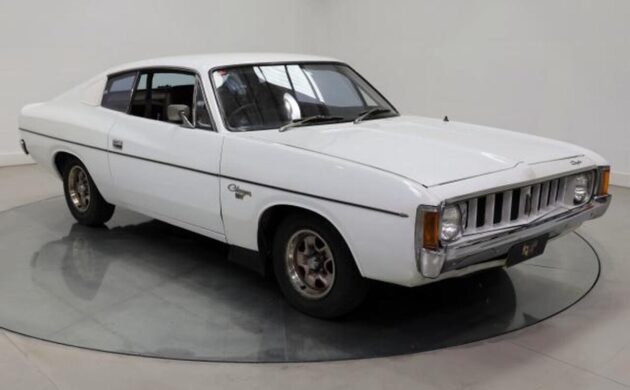


Nice looking car. Did they ever offer these with a standard slant six and not the little hemi? I know the 225 was used extensively in four doors, esp in 2bbl configuration, but in these? Might have been a nice import into the states, esp in 1977 when the Dart/Dusters went away leaving us with the horrid Volare/Aspens. Thank you for putting this here.
Hey Grant, thank you so much for the feedback. Chrysler fazed out the slant-six in Australia in 1970 in favor of the “Hemi” six. They offered it in 215, 245, and 265ci versions. The range-topping 265 fitted to the Charger E49 pumped out an incredible 302hp thanks to some internal upgrades and the triple-Weber induction system. It could storm the ¼ mile in 14.2 seconds, making it the fastest six-cylinder production car in the world in 1972. They’re pretty rare today, and original examples command big money. I never understood why Chrysler never pursued an export program to the US because I think it would have sold well. Given the company’s financial state at the time, maybe they couldn’t justify the expense of emission and safety changes required to comply with US standards. Still, I guess we can always dream!
I can , Import fees are high, and these are Aussie built, so I’m sure the shipping fees would be up there too. The other thing is that they would have to redesign the whole car to meet with the Feds 5mph bumper law , as well a change the car around to be left hand drive . Love or hate the Volare/Aspen twins, but it made a lot more sense to build a car in the U.S. with a proven drivetrain
Grant the Hemi was a 6 Cylinder engine with a hemispheric head, the slant 6 had gone out of date a few years before the 6 Hemi in this model. They went like a cut cat and gave most of the big V8’s a hurry up. There was a motoring jorno out here in Oz who was instrumental in killing the super cars when he did an article on the 6 cylinder Hemi running at 140 M.P.H. with photos to prove it and that was available off the show room floor. Sure a special edition with 3 twin side draft Webber carbs.
Oh this is a nice one . Thanks Dave!
Something I have never seen or heard of. These aren’t the brawny looks of the early Charger we had in the States but the cars here were always larger. Has some good lines and can understand it’s desirability down under. Cool ride!
This is a gem of a write-up, Adam, nice work, sir! And, nice find, Dave!
The recent featuring of Aussie cars got me to looking at sales sites there. Looking at 1997 and older cars (only cars 25 years ago and older can be easily imported into the US), I see cars like this which have a really high price listed, beaters with a low price, and everything in between. I also saw a lot of US cars (LHD) that Aussies took over there. I’d really like to have a newer ute, but these unusual cars are also interesting. All I need is money.
Pretty close knockoffs to Olds SSII rims. If the Chrysler bolt pattern wasn’t different than GM I’d be wondering if they were Olds wheels that were added.
The GM version was used on Chevy S-10s as well.
My thought also
These beauties made right here in Adelaide Sth Australia. Even in the early nineties, 15-20 years after they were made, you would see a dozen or two a day. Not anymore, the few survivors all locked up in sheds to come out on sunny Sundays.
This example needs the interior changed to black with a fish scale dash
Better looking than most cars we were offered here in the USA
I thought that they prefered the Ford Falcon XB GT ‘Interceptor’ … that is at least what Max told me. Great write up
Weeeelll, it doesn’t have the zing of a Crown Victoria in your rear view mirror( the definition of paranoia), but I suppose other countries have hooligans too that must be dealt with. I still say, some of Americas cars would leave this in the dust, but as they say, can’t out run a radio, or today, cameras. It’s always so unusual to see familiar names like “TorqueFlite”, or, “Valiant” and “Charger” in a different package. As Americans growing up, as far as we were concerned, the world ended on either coast, and while a few imports trickled in, we knew nothing of other countries shenanigans. I suppose we weren’t so different after all. Thanks to Adam for showing us “Seppos”, speed, or the desire for it, is universal and must be dealt with accordingly.
I would love to have this car. Ever since being in that part of the world, I have wanted to bring a car to the USA. From what I have seen and heard it is very difficult to do if not impossible. And even if you could the cost is just not worth it.
Cars are easy to import if over 25 years old. Almost impossible if newer. To get your true cost, convert to US dollars, figure in duty and shipping. Depending on what country you are bringing it in from, it may need cleaning and other prep. There are companies that will take care of everything for a fee.
Joe,
Dave is correct, it’s not difficult to import a car of this age into the USA. As long as you pay the 2% of the purchase price to US Customs, and fill out the import papers and take advantage of the fact the car is over 25 years in age, you’ve got it into the country.
Having imported dozens of vintage cars from all over the UK and Europe, My one very important suggestion is to invest in a round trip airplane ticket to go visit the car you want to buy. Case-in-point: Back in 1989 I had a wealthy client that wanted to buy a Rolls-Royce Phantom 5 or 6 limousine. The 2 of us flew to the UK and spent a week traveling all over the country looking at Phantoms for sale, including several that had been advertised as “needing nothing”.
We returned to America, having bought nothing. But my client thanked me for providing him with an education on buying an expensive car, and relying on other people to provide accurate info on the car. His remark said it all:
“America certainly didn’t invent the shyster used car dealer!” I told him that if he could hold off on buying a Phantom, I would probably find him a LHD version sold new in the USA. About a year later I found him a P-6 that fit his needs perfectly, and as far as I know, his family still owns the limo today.
How is it a “Police Edition” when it only has 2 doors??
For pursuit. Just like CHP using mustangs, Camaros or even motorcycles. Not intended for back seat passengers, just for keeping up with offenders.
Wow, I guess you’d be really surprised to hear that a lot of police agencies right here in the United States ran nothing BUT 2-door cars right up through the late-’60’s and even into the early ’70’s. You must be reeeeeally young.
Thanks for the excellent write up. We are about to add a second Holden to the extended family. Ever since driving an 06 Monaro in 2006 I have enjoyed learning about Australian cars and car culture there.
By the time these were released Chrysler Australia had stopped using the slant six replacing it with three variants of the Hemi upright 6 cyl 215, 245 and 265 with a 2 barrel Carter carby with a choice of 3 SPD or 4 spd manuals , Borg Warner 3 SPD auto or the 727 Torque flite behind the 318 V8 the Charger went through to 1978 CL model of which my Dad owned a 265 auto model
I’ll have to disagree with most. I sure don’t know what the Aussies did to the fellas in the design departments of the automakers to get such ugliness thrown at them. There are very few cool looking Aussie cars produced.
A lot of money being asked for so much ugly.
I guees with a name like that, well…oh, nevermind. Obviously, you’re not a Mad Max fan (and I mean the original one, not ANY of the rest, which sucked).
Yes, one needs a good name to have good taste, d’uh, what was I thinking……….
I don’t think that’s true, vast majority of police cars r 4 door…..and I’m 62 and grew up in Detroit.
I only remember the 5.0 Mustangs used by the California Highway Patrol
Well sir, I beg to differ. After 30 years in law enforcement and, as a collector and restorer of over 100 vintage police cars, I hate to tell you this but, you are dead wrong. For example, Virginia State Police ran 2-doors EXCLUSIVELY, all the way through the late ’60’s. Nebraska used them through the ’70’s (including 2-door Monacos in ’77). Colorado, Rhode Island, I could go on and on and on…I had a ’65 Oregon SP Ford Custom, among others, including a 1968 Va. SP Fury I that was a 2-door.
If you’d like, just Google it yourself. I’m sick of people not knowing how to look stuff up themselves and wanting to argue about things they don’t know much about.
Well, that wasn’t the case in Detroit where I grew up or L.A. where I spent 33 years.
Not one 2 door in all of Ontario in the 70’s.
You sure know a lot Micheal, too bad you’re wrong about this.
Sorry u felt u were arguing, I thought we were having a discussion!
Texas DPS (state troopers) used a lot of 2 door cars in the 80s, mainly Camaros. All of the city police and county sheriffs I remember had 4 door cars.
In CT. too, at least on the State police level – always 4 door , Fords and Plymouths
I. Want. This. Car.